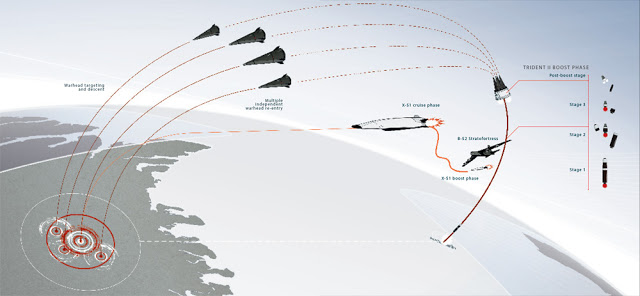The U.S. Army and Navy are teaming up to test a hypersonic glide vehicle next year, according to an Army official. The “offensive weapon technology” is part of the Department of Defense’s Conventional Prompt Global Strike demonstration.
Conventional prompt global strike (CPGS) weapons would allow the United States to strike targets anywhere on Earth in as little as an hour. This capability may bolster U.S. efforts to deter and defeat adversaries by allowing the United States to attack high-value targets or “fleeting targets” at the start of or during a conflict. Congress has generally supported the PGS mission, but it has restricted funding and suggested some changes in funding for specific programs.
The Air Force and Navy have both considered deploying conventional warheads on their long range ballistic missiles. The Navy sought to deploy conventional warheads on a small number of Trident II submarine-launched ballistic missiles.
While most analysts expected the Air Force to take the lead in deploying a hypersonic delivery system on a modified ballistic missile—a concept known as the conventional strike missile (CSM)—tests of the hypersonic vehicle known as the HTV-2 have not succeeded. An alternative glider, known as the AHW [Advanced Hypersonic Weapon], may be deployed on missiles based at sea. Congress may review other weapons options for the CPGS mission, including bombers, cruise missiles, and possibly scramjets or other advanced technologies.
The PGS system is intended to complement existing American rapid-response forces, such as Forward Deployed Forces, Air Expeditionary Groups (which can deploy within 48 hours) and carrier battle groups (which can respond within 96 hours). Possible delivery systems for PGS warheads include:
- a rocket similar to existing ICBMs, launched from land or via submarine
- an air- or submarine-launched hypersonic cruise missile, such as the Boeing X-51 or Advanced Hypersonic Weapon
- a kinetic weapon launched from an orbiting space platform
Advanced Hypersonic Weapon
On 18 November 2011, the first Advanced Hypersonic Weapon (AHW) glide vehicle was successfully tested by the U.S. Army Space and Missile Defense Command as part of the Prompt Global Strike program. The missile was launched from the Pacific Missile Range Facility in Hawaii, and struck a target at the Reagan Test Site on Kwajalein Atoll, over 3,700 kilometres (2,300 mi) away, in under 30 minutes. The prototype, which incorporated technologies developed by Sandia National Laboratories, was used to gather data to assist the development of future hypersonic warheads. The AHW followed an endo-atmospheric (within earth atmosphere, at altitude below 100 kilometers) non-ballistic trajectory during the test flight. This is a crucial design feature, as following a depressed trajectory that is much lower and flatter than a normal ICBM prevents other nuclear-armed nations from mistakenly thinking the AHW is a nuclear-tipped missile.
The second AHW test flight occurred on 25 August 2014 from the Kodiak Launch Complex in Alaska. The mission was terminated shortly after liftoff due to an anomaly in the launch vehicle. Operators triggered a self-destruct sequence four seconds after launching, with eyewitnesses claiming the weapon had veered off trajectory just as it took off. A Failure Review Board released the results of their investigation into the failed launch in early February 2015.
SOURCES- Defense Daily, Congressional report, Wikipedia

Brian Wang is a Futurist Thought Leader and a popular Science blogger with 1 million readers per month. His blog Nextbigfuture.com is ranked #1 Science News Blog. It covers many disruptive technology and trends including Space, Robotics, Artificial Intelligence, Medicine, Anti-aging Biotechnology, and Nanotechnology.
Known for identifying cutting edge technologies, he is currently a Co-Founder of a startup and fundraiser for high potential early-stage companies. He is the Head of Research for Allocations for deep technology investments and an Angel Investor at Space Angels.
A frequent speaker at corporations, he has been a TEDx speaker, a Singularity University speaker and guest at numerous interviews for radio and podcasts. He is open to public speaking and advising engagements.



